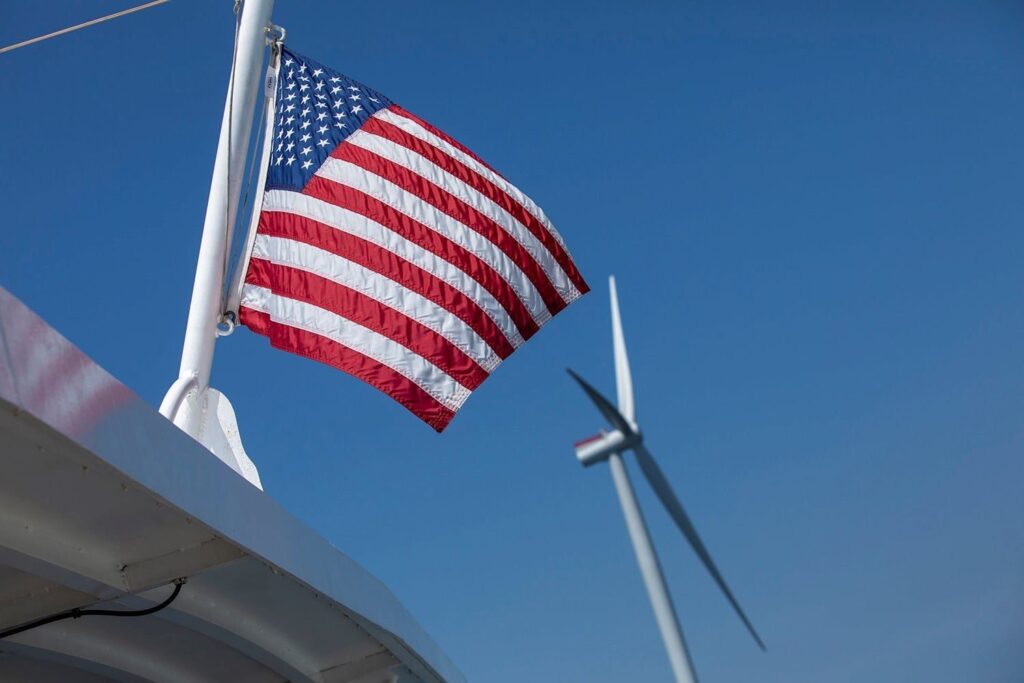The U.S. Senate today overwhelmingly passed the National Defense Authorization Act for fiscal year 2021, a wide-ranging $740 billion defense bill that sets policy for the U.S. military.
Among its many provisions, the bill included an important provision for the maritime and offshore wind industries. Specifically, Section 9503 of the legislation affirms that the Outer Continental Shelf Lands Act (OCSLA), which governs offshore energy activities in federal waters, applies to offshore wind and other renewable energy, including the application of the Jones Act.
A statement Offshore Marine Service Association (OMSA) says the provision will provide for investment and ensure parity between oil and gas and renewable energy projects. The association compared the provision to an amendment offered earlier this year by U.S. Representative John Garamendi (D-CA) to the Clean Economy Jobs and Innovation Act, which clarifies that existing safeguards that govern offshore oil and gas also apply to offshore wind energy. That legislation passed the U.S. House in September.
“Offshore wind development will play a critical role in our nation’s transition to a clean energy economy,” Garamendi said of the amendment. “Demand for offshore wind development in U.S. waters is strong, and Congress must act to ensure this burgeoning industry abides by federal laws and regulations, including the Jones Act, so we have the strongest possible labor, antitrust, and environmental protections.”
OMSA said section 9503 also mirrored legislative language included in U.S. Senators Sheldon Whitehouse (D-RI) and Bill Cassidy (R-LA) S. 3485, the OFFSHORE Act of 2020, which was introduced earlier this year. Of the language being passed, Cassidy said, “The Louisiana maritime industry is one of the largest in the country and has been essential for the growth of energy development in U.S. waters for decades. Congress always intended for OCSLA to apply to renewable energy, but interpretations from some federal agencies created uncertainty. Passage of this language re-affirms Congress’ intent.”
According to the American Wind Energy Association, the development of offshore wind projects off the U.S. East Coast is poised to provide for 83,000 jobs and $25 billion in economic activity by 2030.
U.S. Representative Alan Lowenthal (D-CA), the Chairman of the Subcommittee on Energy and Mineral Resources, the subcommittee with jurisdiction over OCSLA also supported the provision and had previously cosponsored the Garamendi Amendment,” Lowenthal said, “I was pleased to see that critical language to clarify that the Jones Act and other federal protections apply to offshore renewable energy projects, such as wind farms, was included and passed as part of this year’s NDAA.
OMSA’s President Aaron Smith applauded the passage bill with the Section 9503 provision. “We are immensely grateful that Congress has passed legislation ensuring that all U.S. laws apply to offshore wind development and providing parity between offshore oil and gas projects and offshore wind projects,” Smith said.
As an organization, OMSA had advocated heavily for the OCSLA provision and is a big proponent of the nation’s burgeoning offshore wind industry, also advocating for quicker approval of offshore wind permits, working to ensure that the Jones Act fully applied to the market, and other advocacy to ensure that the U.S. maritime industry competed on a level playing field with international competitors in the market.
President Trump has threatened to veto the NDAA despite it having a veto-proof majority in Congress.

